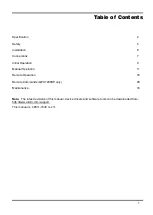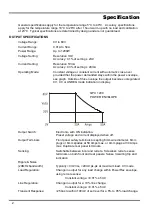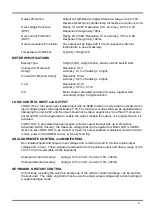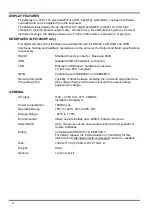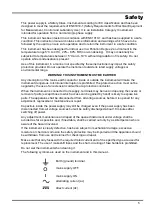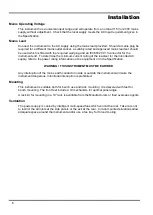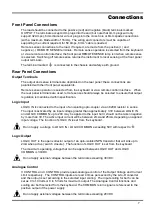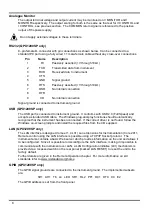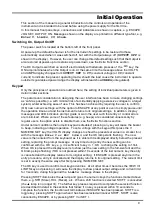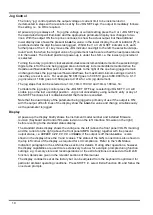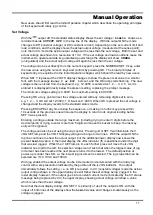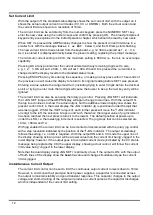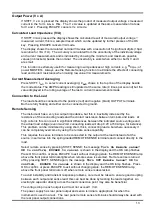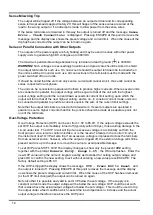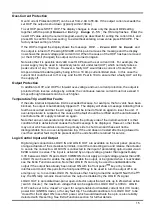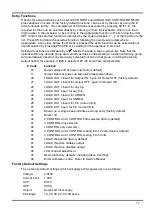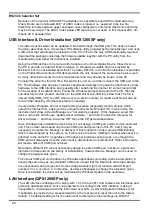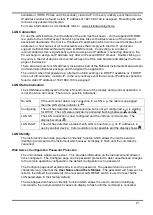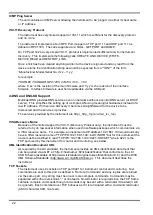
7
Connections
Front Panel Connections
The load should be connected to the positive (red) and negative (black) terminals marked
OUTPUT. The terminals accept 4mm plugs into the end (but note that 4mm plugs will only
support 32 Amps), 6mm diameter wire or plugs into the cross-hole or 8mm spade connections
(with a maximum blade width of 16mm). The wiring and connectors must be capable of
supporting the current required; for 50 Amps, 6mm
2
cable is needed.
Remote sense connections to the load, if required, are made from the positive (+) and
negative (
−
) REMOTE SENSE terminals. Remote sense operation is selected from the keyboard
or via a remote control interface; the front panel REMOTE SENSE lamp is lit when remote sense
is selected. Switching off remote sense returns the instrument to local sensing at the front panel
output terminals.
The terminal marked
is connected to the chassis and safety earth ground.
Rear Panel Connections
Output Terminals
The output and sense terminals are duplicated on the rear panel; these connections are
paralleled with their front panel equivalents.
Remote sense operation is selected from the keyboard or via a remote control interface. When
the rear panel terminals are used, remote sense should always be selected to ensure that output
regulation is maintained within specification.
Logic Input
LOGIC IN is connected to the input of an isolating opto-coupler via
an 820Ω resistor in series.
The input is activated by an input voltage greater than approximately 3.3V between LOGIC IN
and LOGIC COMMON; up to 20V may be applied to the input but it should not be taken negative
by more than 3V. The active input current will be between 2mA and 25mA, depending on applied
input voltage. The function of LOGIC IN is set from the keyboard.
Do not apply a voltage to LOGIC IN / LOGIC COMMON exceeding 50V with respect to
.
Logic Output
LOGIC OUT is the open-collector output of an opto-isolated NPN transistor that will sink up to
2mA when active (‘switch closure’). The function of LOGIC OUT is set from the keyboard.
The maximum operating voltage that can be applied between LOGIC OUT and LOGIC
COMMON is 30VDC.
Do not apply external voltages between the terminals exceeding 30VDC.
Analogue Control
V CONTROL and I CONTROL provide quasi-analogue control of the Output Voltage and Current
Limit respectively. The CONTROL inputs are read 4 times per second by the A-to-D converter
and the output is set according to the selected input scaling. The input scaling for both can be
set as 0 to 10 Volts or 0 to 5 Volts for maximum output. The Analogue Control functions and
scaling are both selected from the keyboard. The COMMON return signal is referenced to the
positive output of the power supply.
Do not apply external voltages between the terminals exceeding 20VDC.


